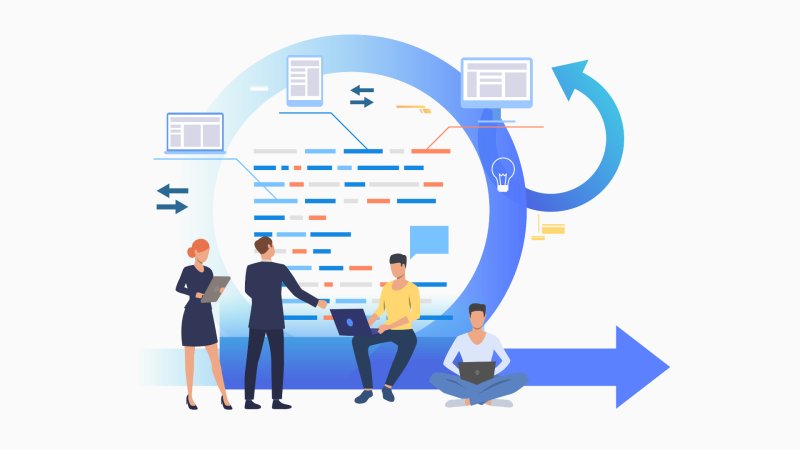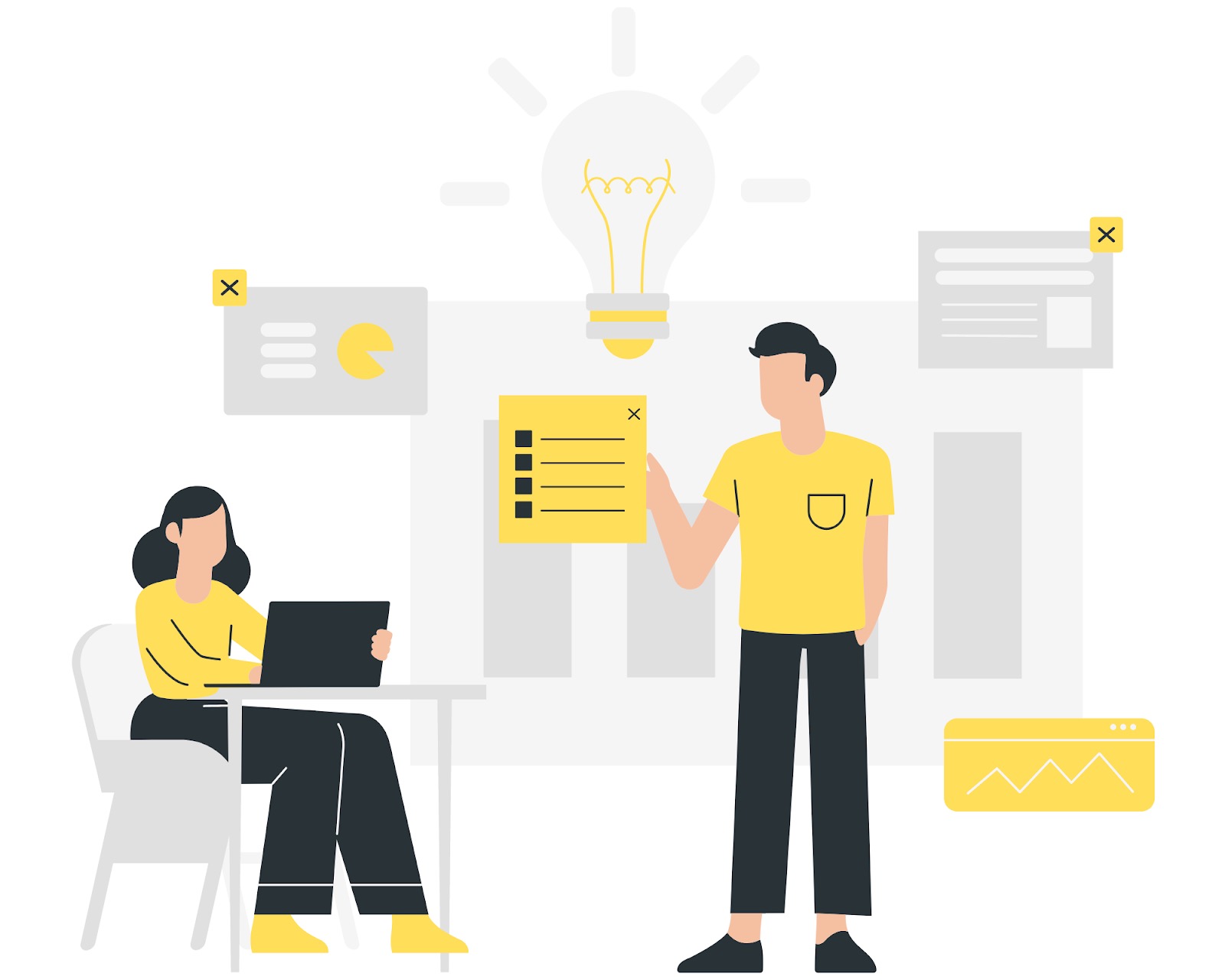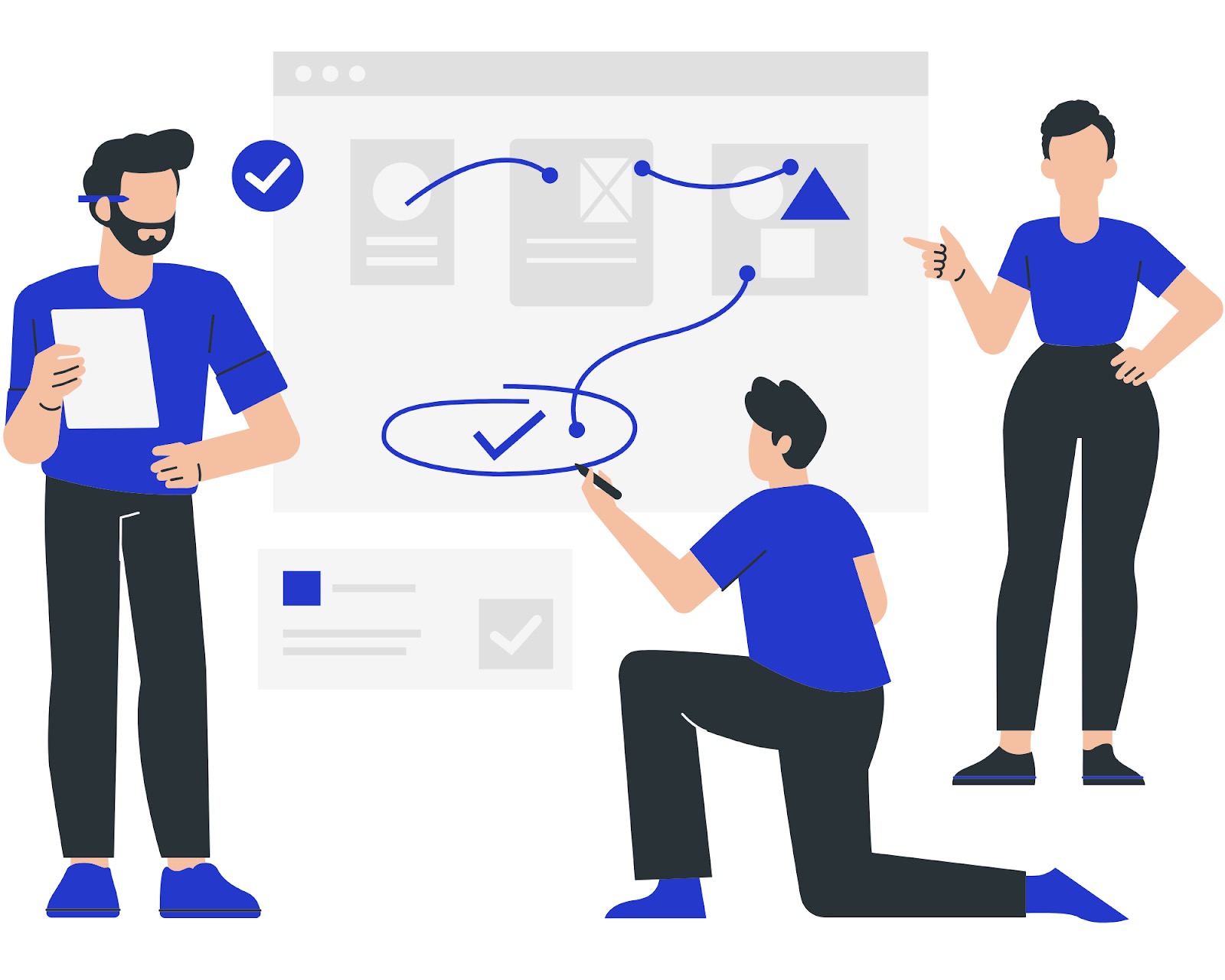
Stages of the software development lifecycle
Complex things make our lives easier. Take, for example, smart homes, virtual reality capabilities, or the online services we love. All of these things run on complex software that work "behind the scenes.
However, no matter how complex a software application is, it needs to be flexible and easy to maintain. So how do developers achieve this? The answer lies in careful preparation of each phase of the product development lifecycle.
What is the product development life cycle?
The Software Development Life Cycle (SDLC) is the sequence of development steps required to create a project, from its initial idea to the product's release to the market and its subsequent support.
The benefits of the development lifecycle system.
The lifecycle provides a number of benefits to development teams that implement it correctly:
1. Clearly described goals.
Developers clearly know the goals of the project and the deliverables they need to achieve within a set time frame, reducing the risk of wasted time and resources.
2. Proper testing before installation
The testing phase ensures that all software is tested before deployment and is ready to go to market.
3. Sequence of Stages
Developers cannot move to the next phase until the previous one is completed and agreed upon by the project manager and the customer.
4. Flexibility of project team members
Because SDLCs use extensive and clear technical documentation and guidance documents, the loss of even one major team member will not compromise project timelines.
Stages of the software development life cycle.

There are 7 main phases of the web development lifecycle:
-
Planning phase.
-
Requirements gathering phase
-
Design and prototyping phase
-
Software development stage
-
Software testing phase
-
Launch of the finished product into the marketplace
-
The operation and maintenance phase
Now let's understand in more detail what these stages are.
1. Planning.
The goal of the stage: to understand what the product should be

In this phase, the team of experts and stakeholders agree on all the details of the future product, answering important questions. What is the purpose of the future product? What problems should it solve? What is the product being created for? After answering these questions, all participants have the same and correct vision of the future product. This facilitates development, and minimizes the risks of creating software.
2. Analysis and collection of requirements.
The goal of the stage: to collect and document requirements for future software

The requirements analysis and gathering phase is probably one of the most critical stages of the software lifecycle. At this stage, the team of specialists with the customer team, and sometimes even with the potential customers of the future product, gathers all the details of the project development. Starting from market research, and ending with the definition of the technology stack and functionality of the future product. All of this information, as a result, is written down in the project documentation, on the basis of which the schedule and deadlines of successive tasks and product development stages are formed.
3. Engineering and design.
The goal of the stage: translate the development requirements into design

Once the functional requirements and technology stack are understood, you can move on to design and engineering. At this stage, developers design the future architecture of the project in the chosen technology. Adaptive and usable design is created, the connection of the front part of the application with the server is thought over, modules are processed and the security system of the resource is thought over.
4. Development phase.
The goal: to create real software
The development stage is where the actual code is already being written. Technical specialists take the design documentation, prototypes, design and architecture, and based on them create the future application or website.
Tasks are divided between team members according to their area of expertise. Developers are responsible for creating the interface and connecting it to the server. Database administrators add the necessary data to the database. Front-end developers create the responsive interface of the future web application.
The result of this stage is a working software product.
5. Testing.
The goal: to ensure that the finished product meets the agreed requirements
Creating a working product is not the end of the development life cycle. After development comes the testing phase. In this phase, the team compares the conceived application in the analysis and requirements gathering phase with the one created after the development phase. Questions are answered:
-
Do all conceived features and integrations work correctly?
-
Do all the buttons work correctly?
-
Did they achieve the end result that was written in the requirements?
If the final application does not work properly, it will be identified at this stage and given to the programmers to work out.
After fixing and debugging the product, it's ready for the next stage.
6. Entering the market (production).
The goal: to deliver the finished software to end users.
The finished and tested version of the application or website is released to the main server and delivered to market (or as we say in IC Studio - "in production"). The helpdesk or the customer collects feedback from users. If there are bugs in the product at this stage that were not identified in the testing phase, but that meet the requirements for the product, they are passed on to the developers and they fix them in the next stage of the lifecycle.
7. Technical support.
The goal of the stage: support for the finished product
The project now enters maintenance mode. At this stage, there is a constant check of product operability, system performance, security and obsolescence.
Technicians fix problems that may have arisen with the users of the web resource. This may include handling residual bugs that could not be fixed before launch, or resolving new problems that arise from user reports. Larger projects may require longer maintenance phases than smaller ones.
Development Lifecycle Methodologies
Software development lifecycle management methods allow you to effectively plan and follow the development process step by step, making it as predictable and understandable as possible. Each method has its own approach to the product development process. Regardless of which model you choose, the stages of the lifecycle will remain the same. Below we will look at two of the most common methodologies.
Agile model.
Thanks to the agile approach, programmers can quickly adapt to the market situation, because this model allows them to make changes to the product at any stage of the product development process. Agile is a good solution for projects with constantly changing requirements.
This method allows the creation of products using short cycles, where each cycle ends with a working product with a limited number of features. Each of the cycles includes design, development, testing, and deployment phases on a master server for display to the customer or focus group.
The advantage of this approach is that product owners can see the results of each short cycle, provide feedback, and make corrections as needed. Thus, the agile software development lifecycle is known as a continuous process.
Key characteristics of Agile:
-
Limited results, adding new features on the fly;
-
Testing is done throughout software development;
-
Ongoing communication between customers, software developers, and the project, resulting in improved versions after each sprint;
-
Quality assurance is a key process.
The Waterfall method
The Waterfall model is more suitable for projects where expectations and requirements for the future product are clearly defined. While Agile is about flexibility, Waterfall is about the rigid sequence of all stages of the development cycle. Following this model, experts can not go to a new stage without completing the previous one. Thus, in the process of development it is impossible to make any changes and at the end there will be only one version of the finished product. Whereas with the flexible approach, each new cycle leads to a working version of the product.
Key characteristics of the waterfall model:
-
Rigid sequence of development steps;
-
You can move to the next development step only after the previous step has been completed;
-
Customers do not participate in the software development process;
-
All changes are made after the implementation of the finished software.
Development of any software is a voluminous and complex task and requires careful planning, regardless of the model. The creation of a web project begins with the collection of requirements and proceeds sequentially through all the stages of the development lifecycle.
By having an outlined software development lifecycle, the team and customers can experience the bliss of predictable software product development. For software developers, it means understanding what they are doing now and what will happen next, and for customers, it gives confidence that their product will be developed according to all expectations and on time.
Thus, all projects should have an outlined software development lifecycle, because this is the only way to ensure that the resulting software will meet the requirements of both business owners and end users.